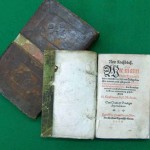 What makes a rare book rare? For any commodity to be called rare, scarce, or hard to come by, the fundamental economics law of supply and demand is the primary factor. The higher its demand vs its supply the rarer of a commodity it becomes and that should result in higher pricing.
What makes a rare book rare? For any commodity to be called rare, scarce, or hard to come by, the fundamental economics law of supply and demand is the primary factor. The higher its demand vs its supply the rarer of a commodity it becomes and that should result in higher pricing.
Different commodities become rare for different reasons. In the case of books the most common reasons are: Importance, Scarcity, Imprint, Age, Condition, Author, Subject, Association and Physical Properties, ISIACASAPP. All of these attributes contribute to incresed demand which supports the fundamental law referenced above.
Let us now give a short description of the ISIACASAPP factors:
Importance: Does the book contribute to human knowledge and future development? Is the book original enough to attract readers, admirers, book lovers ? First editions of books with such content have additional value since they carry the element of potential to appreciate in value, similar to the psychological factors sometimes driving the stock market higher. Reproductions or later editions usually follow a well received and highly successful first printing. It is the publisher’s common reaction to raised demand and the reason behind first editions being more scarce and more attractive to collectors.
Scarcity: Scarcity is a major factor which leads a book into the rare book categoty. There are quite a few characteristics which make a book scarce. It may be due to its limited edition or an a unique feature such autographed copy, or it may be that some natural disaster such as a fire or flood has extinguished most of the books printed. Scarcity when combined with one or more of the other ISIACASAPP criteria, can make the book very rare and thus highly priced.
Imprint: The imprint, meaning the place and date of publication, together with the name of the publisher, gives an analogous potential to a book. This combined with other factors/criteria is what makes the book rare. Usually the earlier the date of publication the rarer the book becomes. Also, there are publishers who through their craftsmanship achieved superior production in book printing and binding. These publishers are the ones who take pride in their work and put quality before quantity in their publication, thus differentiating the book from any book in its category. These are more desirable and well sought after.
Age: Age is not a critical factor by itself, and there are newer books which are rarer than older books in their category. However we have to admit that age may lead to scarcity, or age may have given the book the opportunity to contain original and contributing work to expand human knowledge.
Condition: Books are fragile and easily damaged. Original binding, dust-jacket, complete contents, without torn or missing pages are all very important. Markings, stains or other external embellishments negatively affect demand as well. The condition of the rare book also depends whether or not the pages have become brittle with age.
Author: The author of the book also determines the book’s potential. Books written by well known or prize awarded authors, or great books by famous authors who are no longer alive, are considered rare by default.
Subject: Even though the subject of the book may not be an important factor, there are rare book collectors who have preference in certain subjects and titles. When the subject is combined with age and scarcity however, this amalgamation gives the book a different appeal and desirability.
Association: By association we mean with whom and which event the book is associated with. Books owned and signed by famous people have a greater demand, which thus means higher monetary value than others. Of course, books that are associated with an event that changed the local or world history, are also more sought after and become more rare.
Physical Properties: Physical properties start with the binding. Handmade bindings give the book a higher value as they make the book more attractive. The contents, original photographs, fine illustrations or color plates also make the book potentially valuable.
In conclusion, the more ISIACASAPP criteria a book satisfies the rarer it is, and thus the higher its value becomes. The fundamental law of supply and demand is always at play through variations in ISIACASAPP factors which dynamically affect the object we love and cherish on Earth – the rare book.
{ 1 comment… read it below or add one }
I genuinely enjoy reading on this website , it has got wonderful posts . “The great secret of power is never to will to do more than you can accomplish.” by Henrik Ibsen.
{ 2 trackbacks }